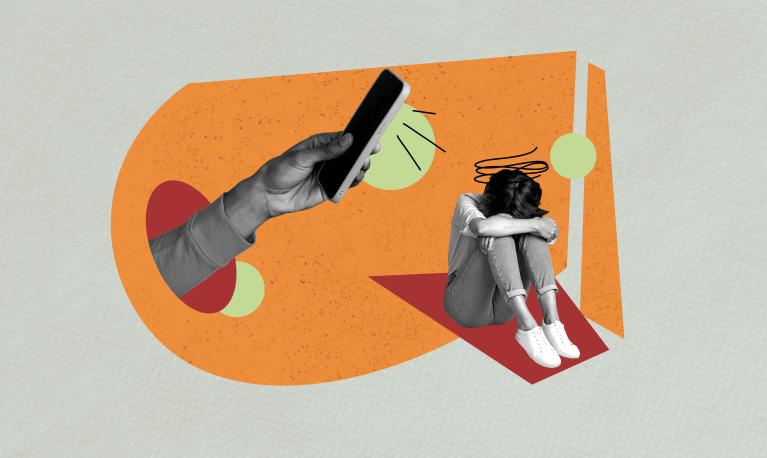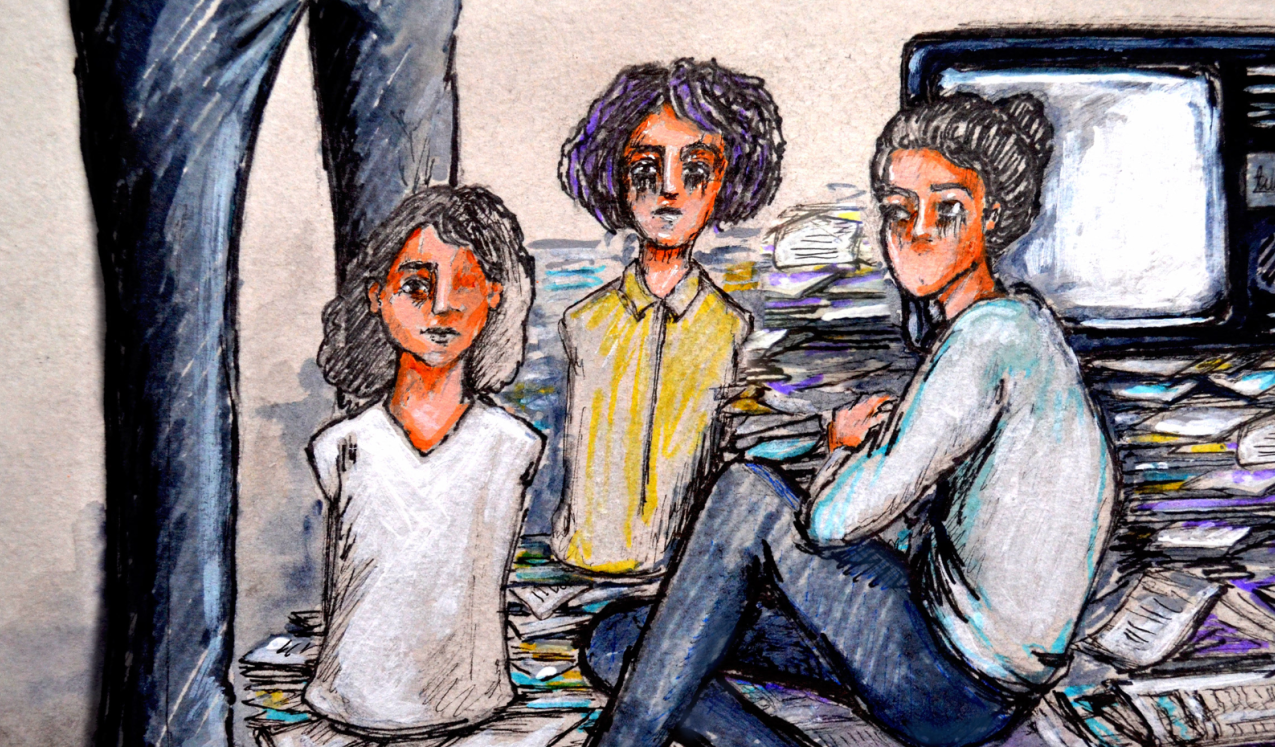
- Blog
- 4 December 2023
From drama to murals: a visual journey of feminist artivism against GBV
- Author: Diana Jiménez Thomas Rodriguez
- Published by: ALIGN
Artivism is all about change. Feminist artivism refers to artists who use their art as a form of feminist engagement and to activists who use art in their collective action to advance gender equality. Feminist artivism has been used in many different ways to shine a light on key issues, such as gender-based violence (GBV).
Created for this year’s 16 days of activism against GBV, this photostory shares examples of feminist artivism against GBV. These examples are only a few drops in a sea of feminist artivism on GBV, but highlight how artivism spans communities, decades, and art forms. The examples aim to capture a wide spread of objectives, from engaging young people to tackling victim-blaming, and from disrupting taboos to supporting the recovery of GBV survivors.
We encourage you to click through the mini-galleries and watch the embedded videos to get a flavour of these powerful pieces of artivism.
Engaging young people through drama and arts - Mujeres en las Artes
Mujeres en las Artes is a Honduran organisation created in 1995 that promotes the arts and their use for social justice. In collaboration with the UN Women’s Spotlight Initiative, Mujeres en las Artes has been using drama and visual arts to engage young people in challenging the harmful gender norms that perpetuate GBV and suggesting ways to end it. They have also organised art installations against GBV, such as 2021’s Etymology of Absence, which asked the audience to reflect on gender roles and relations, learn about GBV and take action.
Battling against victim blaming - the Power of Priya Comics
The idea for the first Power of Priya Comic arose after the Nirbhaya case in 2012 – when a young woman in New Delhi (India) was raped by men on a public bus, resulting in her death. The first comic book, released in 2014, aimed to change the practice of blaming victims of sexual violence for their attacks through the voice of superhero Priya. There are now seven comic books in the series, as well as an augmented reality (AR) component and street art activities. The creators of Priya were awarded a Gender Equality Champion prize by UN Women in 2015.
Their most recent work, the comic book Kaia, was made in collaboration with the Foundation Natalia Ponce de Leon in Colombia and is based on the story of Natalia, the victim-survivor of an acid attack. The comic book aims to support the recovery of victim-survivors by providing hope that healing is possible.
Sharing stories in the fight for justice – the Mujeres Transformando Mundos’ art installation
In Guatemala, the feminist organisation Mujeres Transformando Mundos created a travelling art exhibition about the Sepur Zarco case – where Mayan Q’echi women were forced into sexual and domestic slavery at the Sepur Zarco military base during the country’s civil war. It tells the story of the Grandmothers of Sepur Zarco – a group of 15 victim-survivors and their struggle for justice which culminated in 2016 with the first conviction in Guatemala’s courts on conflict-related sexual violence. A virtual tour of the exhibition is available online.
Fighting femicide through beauty - Siempre Unidas collective
Siempre Unidas is a feminist collective in the state of Quintana Roo (Mexico) that works partly through street art. In 2021, in response to the femicide of Victoria Salazar – a refugee from El Salvador who died in police custody – the collective began an anti-femicide mural project called RestaurAmoras. In the words of Tallulah Lines, a member of the collective: ‘We have painted beautiful face after beautiful face of women killed by men; killed by boyfriends and ex-boyfriends mostly, but also by other men in their lives’. The project aims to provide symbolic reparation for the families of murdered girls and women: to honour and remember them, communicate support to their families, and to make GBV a more visible public issue. The collective always involves the families of victims, by seeking their permission and inviting them to be there during the painting and unveiling.
Disrupting the taboo around GBV - Hossna Hanafy’s Women’s Issues
Egyptian artist Hossna Hanafy produced Women’s Issues (2019) with Tadwein Gender Research Center, as part of a joint campaign for women’s empowerment. This series of visuals aim to denounce GBV and disrupt its simultaneous normalisation and taboo-like treatment. As in other pieces of her works, the series highlights GBV as a structural issue of public concern and invites us to imagine alternative narratives where society condemns such violence. Hanafy’s work is also available on her social media account, where she has reposted her work in response to instances of GBV.
Poetry to challenge GBV from an intersectional lens – the Sari Red
Sari Red (1988), by Pratibha Parmar, is a visual poem in memory of a young Indian woman, Kalbinder Kaur Hayre, who was a victim of racially motivated GBV in the UK in 1985. Through her video, Parmar denounces and examines the ever-present threat of violence experienced by South Asian women – in both the private and public spheres – from an intersectional lens. She simultaneously highlights women’s marginalisation in different contexts and points in time, but also women’s active resistance to it.
Shining a spotlight on domestic violence – the Women’s House (Sunglasses) project
Croatian artist Sanja Iveković started Women’s House (Sunglasses) in 1998 in collaboration with a women’s shelter in Zagreb and later with women’s shelters elsewhere in Europe and Asia. Iveković organised workshops with women in these shelters to produce plaster casts of their faces, as well as to give them the space to write their life stories. Sanja superimposed testimonies from victims-survivors of GBV (domestic violence specifically) on advertisements for luxury sunglasses. The posters and plasters have been presented in indoor and outdoor exhibitions, and the posters have also been placed in billboards and newspapers, as a way of raising the visibility and public awareness of domestic violence.
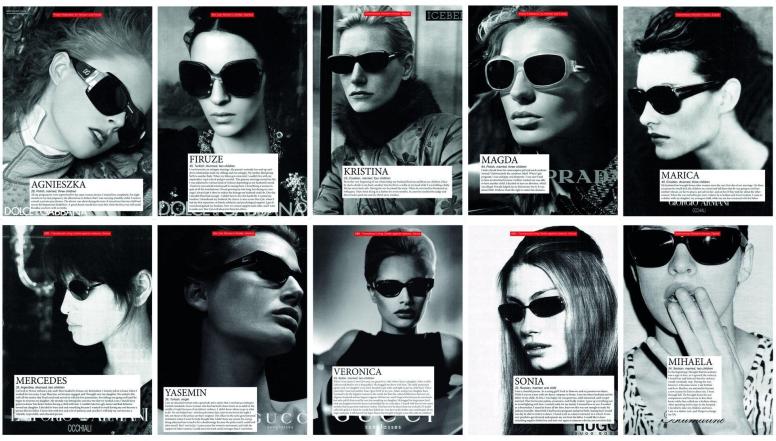

Recovery through art - The Gunshot Incident
Chinese artist Xiao Lu participated in the China/Avant-garde exhibition in Beijing in 1989 with a piece titled Dialogue. The piece consisted of two life-size phone booths (the left one showing the back of a female figure and the right one showing a male figure), a mirror between the booths, and a red telephone on a white pedestal, with the receiver dangling down. On the day of the opening, Lu staged a performance in which she shot two bullets at the mirror. The work was inspired by a phone conversation Lu had with an old acquaintance of her family, during which she accused him of sexual abuse. The exhibition explores the (im)possibilities of dialogue between men and women in the context of GBV, as well as the therapeutic and empowering potential of art in recovering from past trauma.
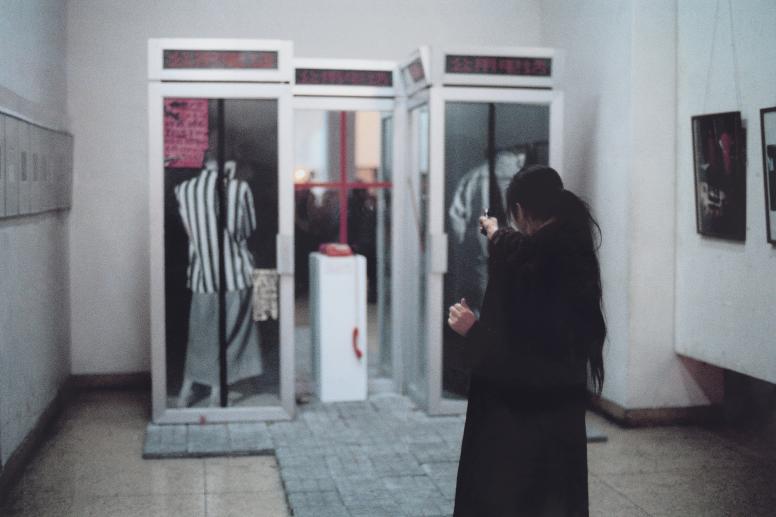

Missing faces for missing girls - Peju Alatishe’s fabric collection
Missing (2014), by Peju Alatishe, is a series of panels featuring silhouettes of girls against Ankara fabrics, in which some panels are themselves missing. The piece was made in response to the kidnapping of 234 girls from Chibok (Nigeria) by Boko Haram that same year. It aims to denounce both the violence enacted against these girls, as well as the failures of the Nigerian government in finding and retrieving them.
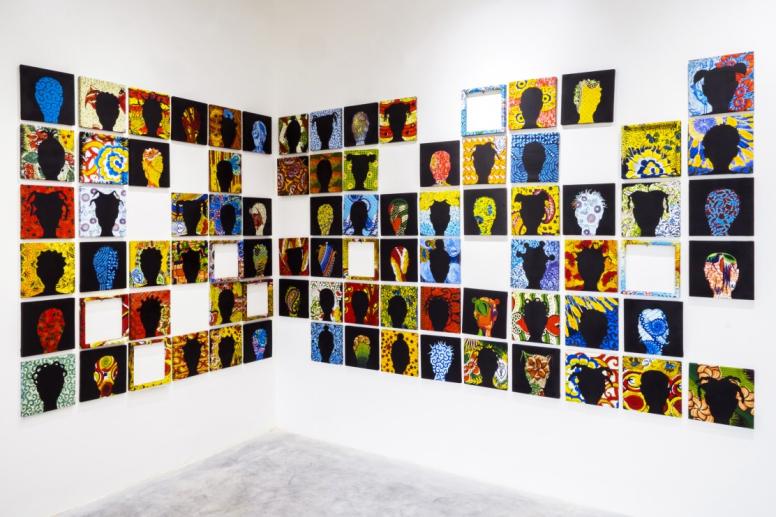

Photographing the hidden – Violence Unseen
UK photographer Alice Bruce collaborated with Zero Tolerance, a Scottish non-profit to end GBV, to produce a new version of the Violence Unseen campaign, launched for the first time in the 1990s and created by Franki Raffles. Curated into a mobile and online photography exhibition, Bruce’s work aimed to explore and contest the lack of recognition and understanding of GBV in British society, highlighting that all women and girls can be subject to abuse. To produce the photographs, Bruce worked with a diverse group of women to ensure the work captured and represented – through its settings, gestures and iconography – their experiences, identities and daily lives.
A future free from GBV - The Tapestry from Pakistan is Red
In 2003-2004, Pakistani artist Farida Batool and Argentinian artist Graciela Ovejero collaborated in the making of a tapestry. Ovejero sent Batool a printed fabric with some of Ovejero’s works, for Batool to do the same. Batool, however, ran a workshop with 13 women in Dastak, a GBV shelter home in Lahore (Pakistan), so that the tapestry captured their experiences and desires. The focus of the tapestry is on the desires and dreams for a better future of the women in the shelter (rather than their past experiences) was the result of the women’s refusal to draw images related to their past and their wish to focus on their future possibilities instead.
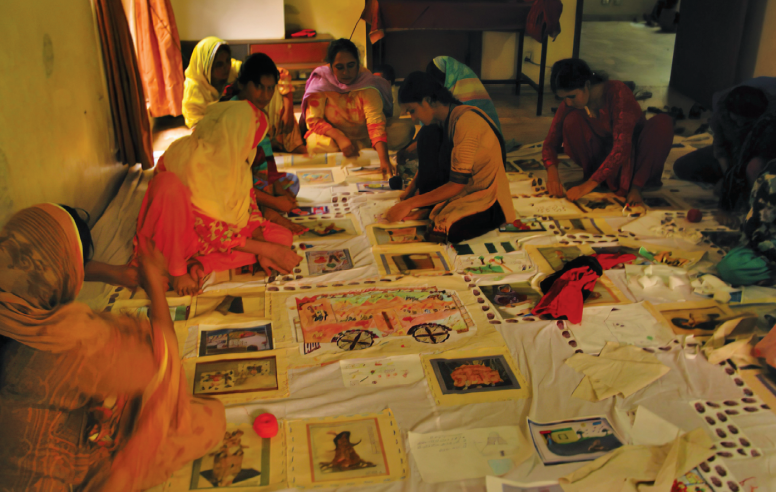

Tweet this photostory
Check out @ALIGN_gender new #photostory 'From drama to murals: a visual journey of feminist artivism against GBV'.
#gendernorms #ENDviolence #16days #feministartivism #artivism


About the author
Diana Jiménez Thomas R. is a Senior Research Officer at the Gender Equality and Social Inclusion team at ODI. She focuses on social movements – particularly feminist and environmental movements. She works on a number of projects at ODI, including ALIGN, that relate to feminist activism, gender-based violence, and gender norm transformation.
- Tags:
- Artivism, Gender-based violence
- Countries / Regions:
- Global
Related resources
Blog
24 November 2023

Report
5 March 2025
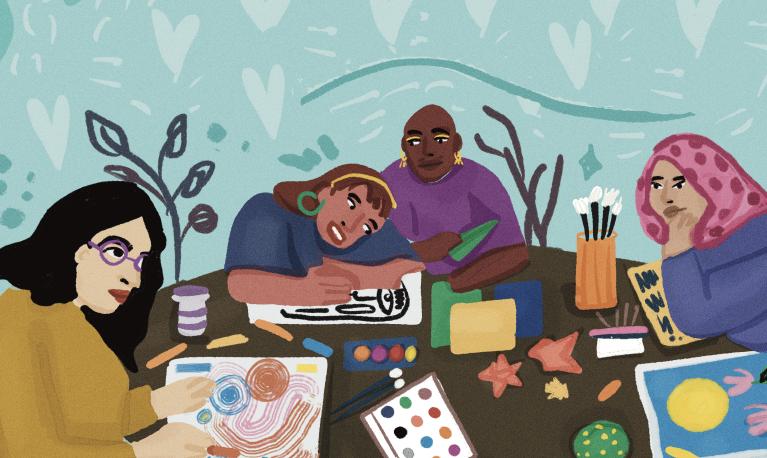
Blog
10 February 2025
